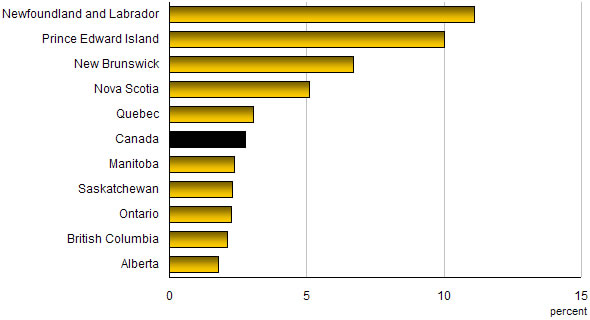Publications
The Canadian Labour Market at a Glance
Working-age population receiving employment insurance benefits, by province
Archived Content
Information identified as archived is provided for reference, research or recordkeeping purposes. It is not subject to the Government of Canada Web Standards and has not been altered or updated since it was archived. Please "contact us" to request a format other than those available.
Number of employment insurance beneficiaries has decreased in recent years
-
In 2007, the average number of Canadians who received employment insurance (EI) benefits each month was 734,000, or 2.8% of the working-age population.
-
The number of EI beneficiaries has declined by 12.8% since 2003, after increasing during the previous three years. This decrease reflects the improvement in labour market conditions from 2003 to 2007.
-
In 2007, Ontario had the largest number of EI beneficiaries and 32% of all beneficiaries. Nevertheless, Ontarians who received EI benefits made up only 2.3% of the province's working-age population.
-
The highest concentrations of beneficiaries were in Atlantic Canada and Quebec. In 2007, the Atlantic provinces had 19% of all EI beneficiaries even though they accounted for only 7% of Canada's working-age population.
Chart K.2
Share of working-age population receiving employment insurance benefits, by province, 2007

Sources: Statistics Canada, Employment Insurance Program and Labour Force Survey, CANSIM tables 276-0001 and 282-0002.
- Date modified:
